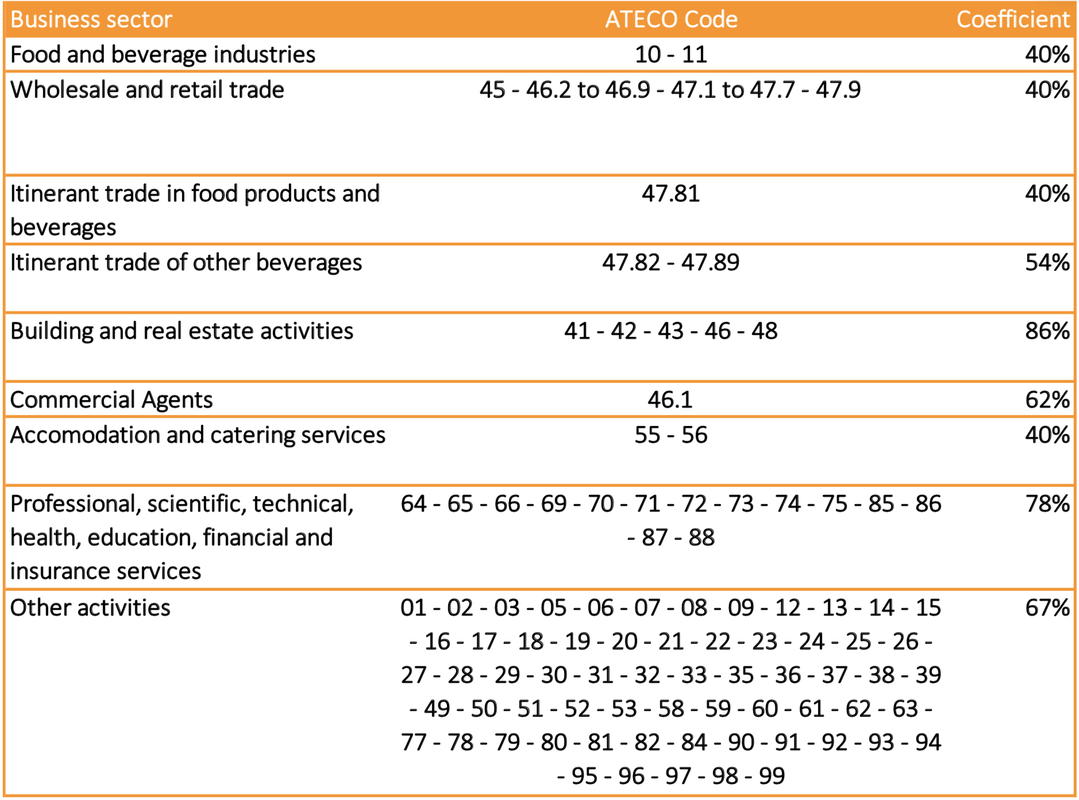Regime Forfetario in Italy – 2021 update
Since 2015, Italy introduced a new tax regime for freelancers and small business activities called the Regime Forfetario. Just like every year, the Italian legislator introduces new minor changes to the law, and the purpose of this brief article is to highlight the most recent updates in regards to the matter.
Note that only private individuals and natural persons can access this regime, thus companies and societies are excluded.
To have a broader overview of freelancing, please consult our Freelance guide for Italy.
Who can access the Regime Forfetario?
You are disqualified from accessing this regime if any of the following conditions apply:
- You make more than € 65,000 of self employment income during any given year;
- You pay more than € 20,000 of salaries per year;
- You opt for special VAT regimes (e.g. bookstores, tobacconists etc.)
- As a non resident you make less than 75% of your income in the European Economic Area;
- You freelance EXCLUSIVELY for your past employer;
- You made more than € 30,000 in employment income in the previous tax year;
- You control, directly or indirectly, a business or a corporation in the same business area.
If none of the above conditions apply to you you can qualify for the Regime Forfetario!
How much tax do I pay under the Regime Forfetario?
There is no recourse on costs suffered, and this is why it


The rate is reduced to 5% for a new business activity – defined as one being carried out for the first time and not an extension of a previous business carried out under the ordinary regime or a prior special scheme. This means that you will suffer an effective rate of tax of 3.9% of turnover.The maximum annual revenue threshold is € 65,000 per tax year.
What about INPS payments?
Social security contributions are deductible from the taxable income on a paid basis – i.e. contributions on last year’s income are deductible from this year’s taxable base, after reduction of the coefficient.Since 2017, commerce and artisanal activities, can claim a 35% reduction on their social security payments as long as the Regime Forfetario applies.
Are there any other advantages in the Regime Forfetario?
On top of the reduced 5% tax rate, the Regime Forfetario is a valid scheme to reduce the bureaucracy connected to the annual tax compliance:
- No VAT needs to be charged on invoices issued and there is no VAT reporting/compliance – e.g. no annual VAT return etc. This also provides a competitive advantage when you do business B2C since you don’t charge VAT
- Simplified bookkeeping – no need to register invoices and receipts, purchase and sales invoices in statutory registers;
- No Ritenuta d’acconto or withholding tax on your invoices
- Exemption from the “Esterometro” and “Spesometro” – the rules that work to stop excess tax deductions for costs in relation to gross income and the parameters deriving from industry sector studies.
- Exemption from ISA tax office audits;
- Cheaper accounting and compliance costs;
- You are not subject to e-invoicing;
- No regional production tax levied (IRAP).
What happens if I make more than € 65,000?
Upon passing the threshold of € 65,000 you are not eligible for the Regime Forfetario and you will shift to the regular IRPEF brackets from the FOLLOWING TAX YEAR.
It is therefore possible to make more than € 65,000 for just one year.
Is this the best regime available?
Despite the very attractive 5% flat tax rate, this regime might not be the best one for the following reasons:
- You cannot deduct actual costs sustained. There is a lump-sum deduction according to the coefficients;
- You need to attach a € 2 stamp to each invoice issued if it exceed Euro 77,47. There is a way to do this online but it is administratively burdensome for people issuing only a few invoices a year.
- You cannot recover VAT on items your purchase . This means that the VAT on purchases of e.g. stationery, IT equipment, telecommunications etc. cannot be reclaimed.
- You cannot benefit from other tax reliefs scheme (e.g. the patent box reduced rate of tax on income from intellectual property).
- You waive all the potential tax deductible items, such as the family dependent tax credit, the house renovation credits, health expenses credits, and the Superbonus 110% which might potentially reduce your tax liability.
- You cannot opt for the new residents tax regime, waiving a potential 90% tax exemption on your income.
We therefore strongly advise to talk to a tax professional to assess your personal tax situation and evaluate carefully the best tax regime applicable to your personal case.
How can AccountingBolla help you?
Accounting Bolla is able to provide a full fledged accounting service to your needs, we will:
- support you in the evaluation of the best tax regime for you
- Set up your Partita IVA;
- Keep your annual tax compliance in order.
Enquire below and setup your activity right now.





Hi, question again😊
Is it possible to have this regime for both – wife and husband – having in total up to 130.000 euros per year and if the activity of both persons is of the same kind?
Thanks a lot!
Kind regards!
It is definitely possible since each taxpayer is considered separately and not jointly!
Example i am in regime forfetario in 2021 and in 2022 i exceeded the 65000 euro. How much tax i will pay for the 2022 income? Is it still under the regime forfettario or the normal?
Thanks
still 5% (or 15%) for that year. You will be disqualified for the forfettario in the subsequent year
What a fantastic resource! I’m thankful for the wealth of knowledge shared here.